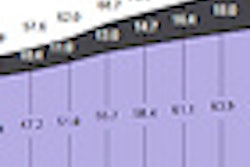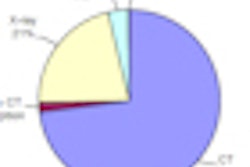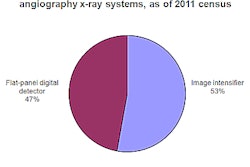The economic downturn, concerns over insurance preauthorization requirements, and the potential shift of exams to other imaging modalities have stalled procedure growth in the nuclear medicine/SPECT market in the U.S., according to a new report by market research firm IMV Medical Information Division.
IMV's 2011 study of the nuclear medicine market estimates that 17 million studies were performed in 2010 at 7,230 sites. Nuclear medicine procedures decreased an average of approximately 0.5% per year from 2007 to 2010.
IMV's report monitors key trends in the nuclear medicine market, such as market size and growth, and summarizes the results of an online survey of 433 nuclear imaging professionals that was conducted in May and June 2011. IMV has been tracking the nuclear medicine industry since 1990.
Market challenges
"Compared to 2007, nuclear medicine procedure volume has been relatively flat due to a combination of several issues," said Lorna Young, senior director of market research at IMV.
These include the loss of procedures to other modalities, such as bone exams migrating to PET and myocardial perfusion studies shifting to cardiac CT and other imaging technologies. In addition, preauthorization requirements have made nuclear medicine, as well as other advanced imaging modalities, vulnerable.
Another recent issue has involved supply problems with molybdenum, the precursor to technetium-99m, which created a significant level of uncertainty in 2009 and 2010 regarding the availability of radiopharmaceuticals needed for myocardial ischemia perfusion studies.
For cardiology practices that have their own nuclear medicine equipment, there is the added uncertainty regarding potential changes in their practice model, due to recent changes in Medicare and third-party insurance reimbursement policies. Respondents from physician office locations were asked if they were planning to pursue strategic changes over the next few years, including changing practice or ownership structure to a joint venture with hospitals. Almost one-third are either considering or planning such changes.
Despite these looming changes, physician offices still constitute about one-third of the locations performing nuclear medicine imaging, according to the IMV report.
"For those facilities that are not in hospitals, 87% of the procedures that are done outside the hospital are cardiology related; whereas, in hospitals it's just short of half," said Young. "The rest are bone, liver, renal, respiratory, and other studies."
Other key findings
The study found that the nuclear medicine market is mature, with an estimated replacement time of 12.8 years for the typical gamma camera. However, a relatively healthy number of nuclear medicine sites are planning to buy cameras over the next three years, primarily to replace aging units.
An estimated 30% of the nuclear medicine installed base (an estimated 2,175 sites) plan to acquire fixed nuclear medicine cameras from 2011 through 2013, which is up from the 23% of sites cited in IMV's 2008 summary on the nuclear medicine market.
Of the respondents who plan to purchase nuclear medicine units, more than 85% of the planned units are replacement, with the remaining planned as additional units.
Consistent with the uncertainties facing cardiology practices, only one of six of the planned purchases are from physician practices, with five or six planned by hospitals or imaging centers owned by hospitals.
Dual-head SPECT installations comprise 64% of the gamma camera installed base, according to the survey. That percentage is down from 70% in IMV's prior 2008 survey. Meanwhile, the SPECT/CT camera installed base increased from 2% of the installed base as of 2008 to 9% as of 2011. Moreover, IMV found that the market is picking up speed in adopting SPECT/CT, with about one-third of the planned purchases being for SPECT/CT systems.
More than two-thirds, or 69%, of the SPECT/CT and SPECT cameras are considered to be general purpose, and 31% are dedicated cardiac cameras. Nonhospital locations are more likely to have dedicated cardiac cameras, with 62% of the units, compared with 7% to 15% of the cameras installed in hospitals.
Currently, slightly more than a quarter of the sites provide neurology applications, but according to the IMV report, it is possible that over the next few years it will become one-third of the sites. The development of radiopharmaceuticals to address Parkinson's disease could result in growth.
Of the nuclear medicine sites that responded to the survey, 5% said their facility has the capability to perform neurological imaging for Parkinson's disease using nuclear medicine cameras. An additional 17% are planning to perform such studies over the next three years.
Disclosure notice: AuntMinnie.com is owned by IMV, Ltd.



















